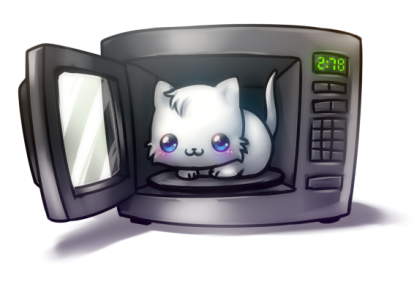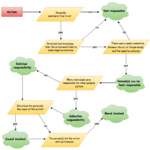How can you implement technologies into society without causing damage? The answer is: you cannot. But you can innovate in a responsible way. I think that you are innovating responsibly when the list of positive consequences is longer than the list of negative consequences taken a, for instance, damage grade into account.
Let’s analyze this example: a woman puts a cat in a microwave to dry where after the cat dies. Who is responsible for this? The woman, the cat or the producers of the microwave? First, blaming the cat would be ridiculous, let me explain why. You can make up an argument to say: well maybe the cat could come up for itself by scratching the lady and running away. But according to the flowchart I made (Áttached media), the cat was not really free to act since the woman holds the cat and it could not have foreseen the negative outcome since cats cannot think (I think?). A stupid example perhaps, but just to make it clear. Now it is going to be more difficult. The woman was free to act, but did she knew the negative outcome of putting her cat in the microwave? Maybe your first thought would be: yes of course, everyone knows! But maybe the woman really did not know what damage straight microwaves on living beings could cause and that is exactly the mistake a lot of innovators make. Not everyone thinks like you or has the same knowledge and not everyone uses a product in the way you were supposed to create it. This is why creating a product or technology in such a way that even the weak gifted can use it safely, is such a big challenge. To go back to the microwave case, the producers of the microwave are responsible. If the producers would have described ‘no cats in the microwave’ in the leaflet, the woman would be responsible, because then she knew there would be a negative outcome. Another ‘but’: 13 percent of the Dutch population cannot read. What if she also cannot read? Lots of things to think about. When the woman could have foreseen the negative outcome, there could be concluded that she had an individual responsibility and was both causal as moral involved. Just use the flowchart to find this out for all your cases.
The title consist ‘the chicken or the egg’. I used this saying to show you that innovation is a viscous circle, you should always iterate and come back to the first thing you set up. A tip for us as innovators: think out of the box, see the unforeseen, but also take into account that some damage will happen due to your invention. Do not mind when your invention is creating a way better world and has a lot of positive consequence, only with a few little damages. As long as your thing is not causing explosions or so, you are fine!


